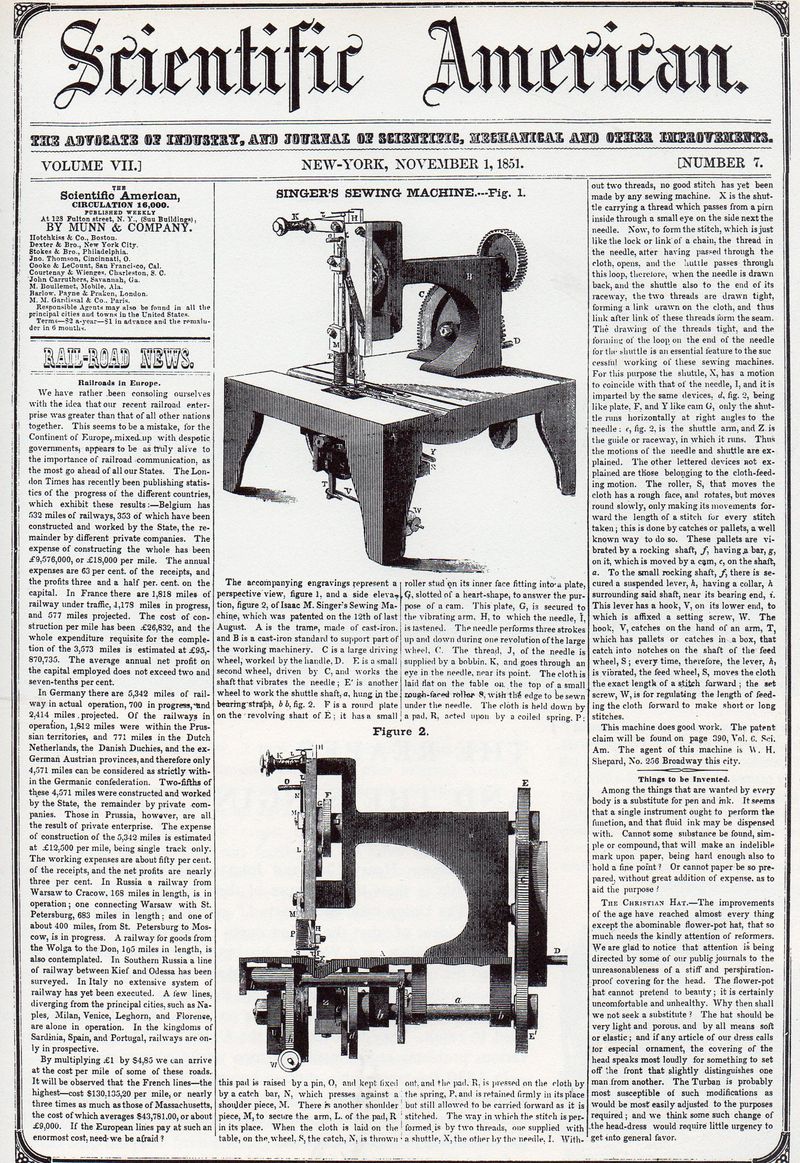JF Ptak Science Books Post 1088
The anniversaries of two famous legal cases bumped me into thinking about the shadows of what things might be. Aticus Finch (from To Kill a Mockingbird) and Thomas Scopes (of the “Scopes Trial”, the famous or infamous “Monkey Trial”) celebrated their 50th and 85th anniversaries (respectively) this past week. Finch the lawyer lost his case, and Scopes, the defendant, lost his as well.
This reminded me of the shadowland stories of roads not taken, or illustrious events whose outcomes didn't quite coincide with the fame and interest of the way things started out.One example from Shadowlands that springs to mind is that of the sewing machine, and the case of William Hunt. Hunt was a remarkable person, an inventor of ingenious and remarkable things, some ubiquitous--and of these, one good example is the safety pin. The “could’ve been” part was the sewing machine. Eight years or so before the battle for precedence and patent began between Isaac Singer and Elias Howe began, Hunt had arrived at the principle solutions for an automatic sewing machine.
 He decided not to seek a patent for the machine. Now, in and of itself, this is not terrifically uncommon in the history of invention. As a matter of fact Thomas Jefferson, the inventor of the standard American moldboard plow (tinkering with it from the 1780s to the 18-teens), did not seek a patent for his invention. By 1814 he came closer to the iconic and revolutionary plow by producing his in iron. The steel, self scouring plow would take another two decades to be introduced by John Deere. (Decades latter Abraham Lincoln would apply for and receive a patent for a boat/buoy lifting device, making him the only president to ever receive a patent.)
He decided not to seek a patent for the machine. Now, in and of itself, this is not terrifically uncommon in the history of invention. As a matter of fact Thomas Jefferson, the inventor of the standard American moldboard plow (tinkering with it from the 1780s to the 18-teens), did not seek a patent for his invention. By 1814 he came closer to the iconic and revolutionary plow by producing his in iron. The steel, self scouring plow would take another two decades to be introduced by John Deere. (Decades latter Abraham Lincoln would apply for and receive a patent for a boat/buoy lifting device, making him the only president to ever receive a patent.)
The reason that Hunt didn't pursue his sewing machine was based in deep morality--he chose not to patent the thing so that this new advancement in technology would not make seamstresses obsolete, pushing them out of work and costing them their jobs. Of course the machine was introduced a few years later by Singer and Howe, and then the rest is history--just about every invention is going to annoy somebody.
But the irony here is that even though Mr. Hunt chose the high road out of the sewing machine quagmire, saving the jobs of seamstresses for another few years, he didn't have any moral hesitations about his next invention--an improvement to a steel-cased cartridge for rifles. Evidently he was more comfortable with killing machines than he was with protecting the jobs of the working/suffering classes.



However much it's explained to me, I have yet to intuitively grasp how a sewing machine works (not the mechanism - what it does with the thread). Even with this animation - http://en.wikipedia.org/wiki/File:Lockstitch.gif - as far as I'm concerned, it throws the whole needle-and-machine through hyperspace to get the thread through the loop.
Posted by: Ray Girvan | 13 July 2010 at 10:47 PM